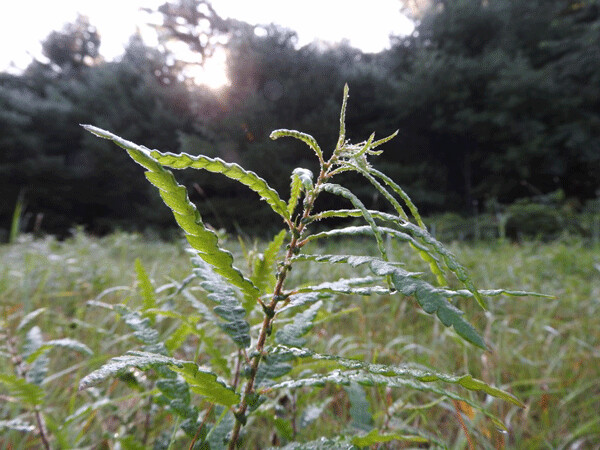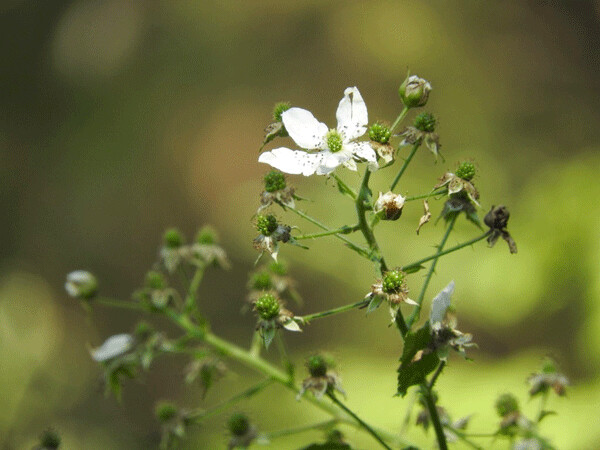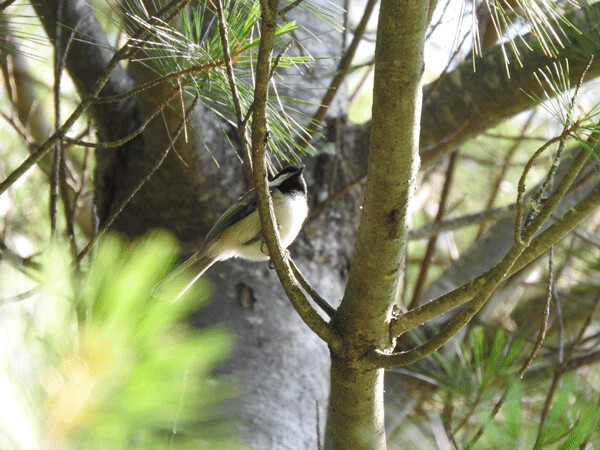Forest Lodge Nature Trail

Have you ever visited the Forest Lodge Nature Trail? This hiking trail loops its way through beautiful fields, forests, swamps, and bogs near the south shore of Lake Namakagon, about 10 miles east of Cable, Wis., on Garmisch Road. The Cable Natural History Museum established a four-mile-long network of trails in 1968, under the direction of our founder, Mary Griggs Burke. In 1999, Mrs. Burke transferred the property that the trail is on over to the Chequamegon-Nicolette National Forest. The Museum and the Forest Service now share the goals of education, research, and interpretive opportunities for the public, and work together to preserve and manage the Forest Lodge Nature Trail.
The main, 1.5-mile loop trail is dotted with numbered posts that correspond to an interpretive booklet that visitors can pick up at the Museum or the trailhead. For almost a year, Museum naturalists, Forest Service technicians, and Wisconsin Master Naturalist Volunteers have been working to update the decades-old booklet. During the next few weeks, I’m going to give my readers a preview of the booklet, and a chance to catch typos or improve the information. I’d love to hear from you!
The trail begins at the edge of a grassy parking area, tunnels through some dense white pines, and then emerges into a small meadow filled with milkweed and edged with blackberry brambles and white pines. The first numbered post is on the far edge of the meadow.

Senses
Every living thing depends on their senses to help them survive. Humans use sight, smell, touch, hearing, and taste to interpret our surroundings. Non-humans can even sense things like the Earth’s magnetic fields, polarized light, and electric charges in flowers.
Try standing very still and quiet; what do you hear? Cup your hands behind your ears and face the direction of an interesting sound. Can you hear the hum of a nearby bee, or a conversation among crows?
Take some deep breaths. What do you smell? Try rubbing a drop of water under your nose. Can you smell more now? A plant called sweetfern grows nearby. It’s not really a fern, but the lacy leaves of this woody shrub smell spicy when crushed between your fingers.
Blackberries also grow nearby. Their plump fruits ripen from green, to red, to black in late summer. Touching their sharp thorns is no fun, but you may carefully pick and eat the sweet, ripe fruits.
While you hike, remember that all of these beautiful flowers and natural objects you see, hear, feel, smell, and taste are part of someone’s home.
Old Field Succession
Nature is always changing. The area where you now stand used to be a forest. Loggers cleared the forest, and farmers turned the land into pasture. After this area became a nature preserve, the old field started growing back to forest and changing in predictable ways. This is called ecological succession, and it occurs after logging, fires, floods, windstorms, and other disturbances.
White pines are often the first trees to grow in old fields. These evergreen trees have needles that are bundled in groups of 5. To help you remember, think of the fact that W-H-I-T-E has 5 letters.
Because of the bright sunshine in the field, these young white pines grew branches all the way down to the ground. How do you think they will look when they get older? Just ahead, you will enter an older forest. These, too, are white pine trees, but they all grew up together without much space between them. Deep shade has caused their lower branches to die and fall off. Not all of the trees lack lower branches, though. Why might one old tree have grown big lower branches?

Old Growth White Pines
Some of the biggest white pines grew 200 feet tall and 6 feet in diameter. During the intense logging era of 1850-1920, lumberjacks logged this entire area for white pine and hemlock. These trees produced billions of board feet of lumber that was used for construction, furniture and paper production.
Not all uses of white pine require that you cut it down. White pine needles are rich in vitamin C, and can be used to make a tea.
As you walk the rest of the trail, look for decaying stumps throughout the forest. These are the remnants of white pines that stood here 100 or more years ago. Please join me again next week to explore more of this beautiful trail!
Emily’s second book, Natural Connections: Dreaming of an Elfin Skimmer, is now available to purchase at cablemuseum.org/books and at your local independent bookstore, too.
For more than 50 years, the Cable Natural History Museum has served to connect you to the Northwoods. Our Pollinator Power exhibit ends after February 29, but our Curiosity Center remains open, and Mysteries of the Night will open on May 1, 2020. Call us at 715-798-3890 or email emily@cablemuseum.org.
